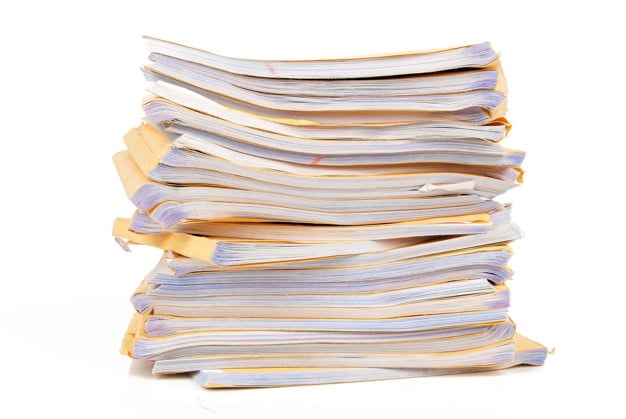A home owner selling their home is required to disclose any material facts he or she knows about the condition of the property. There are many standard disclosure forms that the law requires the seller to make available to the buyer, but these disclosures vary from state to state, and city by city.
Your best bet is to ask your local Realtor for a complete set of all the forms that you’ll need to fill out and provide to buyers. These forms are mostly a series of generic disclosures and advisories to the buyer and only require the seller’s signature.
A handful of these forms, however, will require the seller to answer a series of questions – mostly by checking boxes, and writing explanations as needed. It’s a process that usually shouldn’t take more than a couple of hours at most. You can find an extensive set of disclosure forms in the Resources section of this web site.
In addition to the standard disclosure forms and documentation, the complete disclosure package should include copies of all the inspection reports you have on the property – even old ones if you still have them, from when you purchased the property, and new ones you have hopefully had done prior to listing the property for sale. You’ll also want to include a preliminary title report, natural hazard disclosure report (required throughout California), any HOA documentation as required by law, and it’s a good idea to include utility bills as well.
It’s also best to include all government records for the property – the permit history, any history of building code or planning violations, assessor’s data, etc. If your home has a well or a septic system, include not just a current report but all the historical records as well, which can be obtained from your city or county’s environmental health department.
A Good California Disclosure Package Manifest
- Termite Inspection
- Home Inspection
- Septic Inspection (if applicable)
- Well Inspection (if applicable)
- Public Records (Assessor, Planning/Zoning, Building, Environmental Health)
- Natural Hazard Disclosure Report
- Preliminary Title Report
- Parcel Map (showing easements, right-of-ways, etc.)
- Repair Bids (if applicable)
- Invoices for Work Completed (if available)
- HOA Documents (if applicable)
- Utility Bills
- Insurance Declarations / Annual Policy Coverage + Fees
- Insurance Claims History / C.L.U.E. Report
- Local Disclosure Forms and Advisories (e.g. “point of sale” requirements)
- Mold Disclosure
- Earthquake Safety and Environmental Hazard Guide
- Residential Earthquake Hazards Report (2005 Edition)
- California Home Energy Rating Booklet
- Standard Disclosure Forms (get these from an Agent)
- Transfer Disclosure Statement (TDS)
- Seller Property Questionnaire (SPQ)
- Lead Based Paint Disclosure (FLD) (for homes built prior to 1978)
- Water Heater/Smoke Detector Statement of Compliance (WHSD)
- Supplemental & Statutory Disclosures (SSD)
- Statewide Buyer and Seller Advisory (SBSA)
- Market Conditions Advisory (MCA)
- Megan’s Law Database Disclosure (DBD)
- Agent’s Visual Inspection Disclosure (AVID)
- Carbon Monoxide Notice (CMD)


![[M06/S13] Moving after Selling your Home](https://assets.agentfire3.com/uploads/sites/1928/2014/09/canstockphoto1477492-500x500.jpg)
